Frisian Flag 2014 - 2018
- Mike Lintott-Danks
- Aug 8, 2020
- 4 min read
Over five consecutive years Airspeed Media visited the northern Royal Netherlands Air Force (Koninklijke Luchtmacht) air base of Leeuwarden to photograph the participants in the NATO exercise Frisian Flag.

Frisian Flag was was first held in 1992 following NATO intervention in Bosnia and Herzegovina, originally called exercise DIATIT, the first three letters coming from the word DIANA, 322 Tactical Training Evaluation and Standardization (TACTES) Squadron's nickname (the organizing unit) and the last three letters coming from the words Tactical Integrated Training. It changed its name to Frisian Flag in 1999. The name ‘Frisian Flag’ was chosen because ‘Frisian’ is named after the province of Friesland, the home of Leeuwarden Air Base and because of similar ‘Flag’ exercises such as ‘Red Flag’ (U.S) and ‘Maple Flag’ (Canada).
Operational planning of Exercise Frisian Flag is organised by 322 Tactical Training Evaluation and Standardization (TACTES) Squadron of the Royal Netherlands Air Force (RNLAF).
Frisian Flag is open to North Atlantic Treaty Organisation (NATO) and Partnership for Peace (PfP) members, participating aircraft fly twice-daily missions during the exercise, which is designed to prepare participating aircrew for complex hostile environments, including missions that may occur in a high intensity conflict. It provides the opportunity for air forces to plan and execute complex missions including offensive and defensive training in a realistic scenario. Defensive Counter Air (DCA) missions are flown with close coordination with ground-based Surface-to-air missile units. (Wikipedia, 2020)
The aerial exercises takes place in two waves daily in the morning and afternoon during the two-week period. Flying is only during the week and weekends and evenings are non- flying times.
During Frisian Flag command and control of aircraft is provided by Dutch and German Control and Reporting Centres (CRCs) supported by NATO E-3A AWACS (Airborne Warning and Control System) aircraft from NATO Air Base Geilenkirchen.
During the exercise, the pilots co-operate with the land and naval forces, including the JTACs (Joint Terminal Attack Controllers). The fighter component will also receive support from a NATO AWACS platform. Aircraft are divided into friendly 'Blue' and hostile 'Red' forces at the start of the exercise.
All air-to-air and air-to-ground weapon launches are simulated with there being no live weaponry used at all.
Leeuwarden AB is a short flying time to the North Sea training complex and the Cornfield range on the Wadden Islands, allowing maximum time on station for all participants in exercise. During Frisian Flag there is also the opportunity to work closely with air refuelling tankers, who are participating in the European Air-to-Air Refuelling Training (EART), that are based at Eindhoven airport.
Participants over the five years have included: -
· Royal Netherlands Air Force (Koninklijke Luchtmacht) Lockheed-Martin F-16s and Lockheed-Martin C-130
· Royal Danish Air Force (Flyvevåbnet) Lockheed-Martin F-16s
· Royal Norwegian Air Force (Luftforsvaret) Lockheed-Martin F-16s and Dassault Falcon 20
· Spanish Air Force (Ejército del Aire) McDonnell Douglas F/A-18s and Eurofighter EF2000 Typhoons
· German Air Force (Luftwaffe) Eurofighter EF2000 Typhoons
· French Air Force (Armée de l’air) Dassault Mirage 2000Ds and Rafales
· Belgian Air Component (Composante air/Luchtcomponent) Lockheed-Martin F-16s
· Finnish Air Force (Ilmavoimat) McDonnell Douglas F/A-18s
· Polish Air Force (Siły Powietrzne) Lockheed-Martin F-16s and MiG-29s
· Royal Air Force Panavia Tornados
· United States Air Force McDonnell Douglas (Boeing) F-15s
Other aircraft supporting the exercise included transport and electronic warfare. The transport bring in equipment needed to support the fighter aircraft deployed to Frisian Flag. The electronic warfare aircraft were provided by the civilian company Cobham and the Royal Norwegian Air Force, both flying specially fitted Dassault Falcon 20 aircraft. The FA20 is a key asset in these exercises and is utilised in different ways during FF. This is in the form of the traditional radar and communications jamming through to false target generation. This enhances the exercise to allow it to be even more realistic, thus providing greater training outcomes. Each of the participating aircraft is fitted with an Air Combat Manoeuvring and Instrumentation pod. These pods link with the FA20 and ground stations allowing the pilots and commanders to view and discuss the entire battle during the post-flight debrief.
The United States Air Force (USAF) sent Air National Guard (ANG) F-15 Eagles to Frisian Flag for the first time in 2015.This was classed as a theatre security package (TSP) that would become a yearly deployment to Frisian Flag at the start of their eight month deployment to Europe.
The TSP participating in Frisian Flag was not the only one that would occur over the coming years and these were in response to Russia’s aggression in Ukraine. The TSP was under the Operation Atlantic Resolve mission and is a demonstration of the US’ commitment to NATO and to maintaining security in the region.
The ANG squadrons that have participated in Frisian Flag have been from:
· 159th Fighter Wing Louisiana ANG
· 125th Fighter Wing Florida ANG
· 104th Fighter Wing Massachusetts ANG
· 144th Fighter Wing California ANG
· 142nd Fighter Wing Oregon ANG
Frisian Flag is still one of the premier exercises in Europe and with its ease of access due to the help of the local Aviation Group Leeuwarden means it attracts aviation photographers from across Europe.







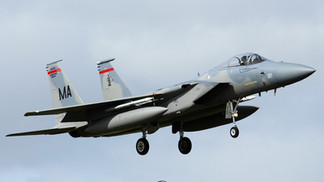



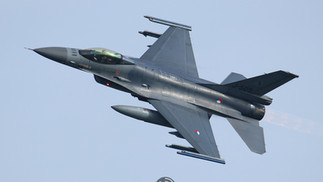







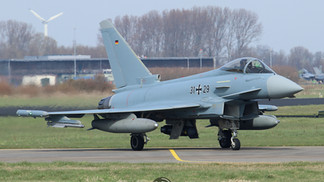

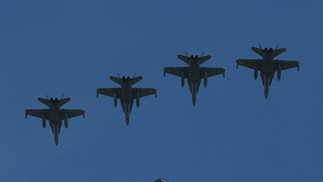
























































































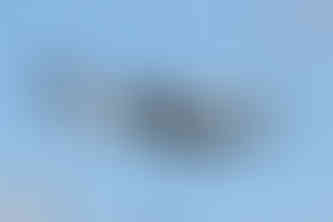






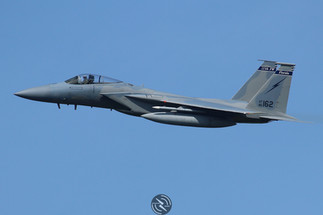

























Comments